An Interview with Sean Kenney, artist who works with LEGO® Bricks
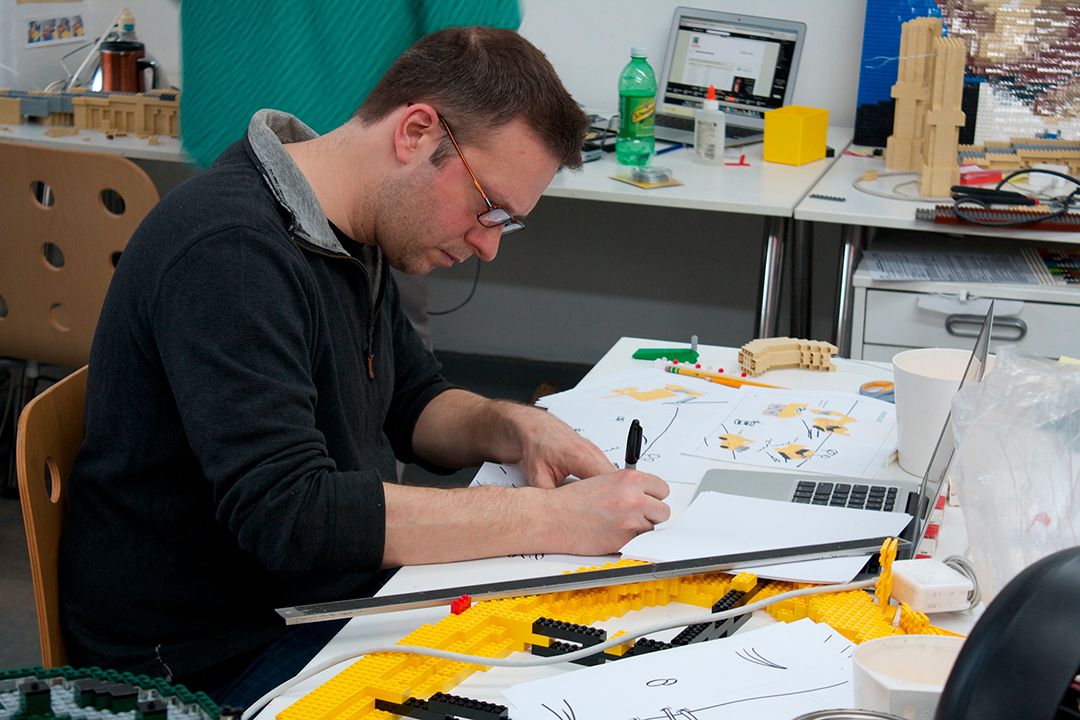
At Imagine Exhibitions, we are honored to work with leading subject matter experts to develop our portfolio of entertaining, educational traveling exhibitions. These partners ensure that our exhibitions are developed with academic rigor, vetted with educational goals in mind, and deliver the world’s most incredible experiences to consumers worldwide. Among those partners is Sean Kenney, a world-renowned artist with an incredible ability to create striking and expressive sculptures using simple LEGO toys.
We worked with Sean to create a number of indoor and outdoor touring exhibitions that pair his artworks alongside STEM-based narratives in an environment that inspires budding artists, engineers, zoologists, and biologists to expand their imaginations, get curious, and explore. At times whimsical, gripping, and awe-inspiring, Sean’s work is unlike anything we’ve ever seen. It’s no wonder that his exhibitions break attendance records at host venues around the globe!
We recently sat down with Sean to discuss his background, process, inspiration, and hopes for the visitors who enjoy his exhibitions.
Q: Sean, many people enjoy building things with LEGO pieces, but very few people are able to create the kinds of things that you can! How long have you been building with LEGO bricks, and how did you become interested in working with this medium?
A: I've been building and playing with LEGO toys my whole life, but I’ve been building LEGO models professionally since 2005. I was a total "LEGO maniac" when I was a kid, and LEGO toys were usually the only toys I ever asked for when my birthday would come around each year. I kept building LEGO models all through childhood and even into my teenage and adult years.
What I love about LEGO toys is that they're just so intrinsically fun and whimsical. I think they reflect my personality well—I am structured and organized and logical, but I am also rather silly and love to laugh. What better medium than a primary-colored children's toy based on straight lines, rules, and math? As an art medium, it's wonderful to see people's reactions to what I create. I don't know that I've ever seen someone look at my work and frown. The LEGO brick makes it inherently whimsical, which I love. Art doesn't have to be so serious all the time.
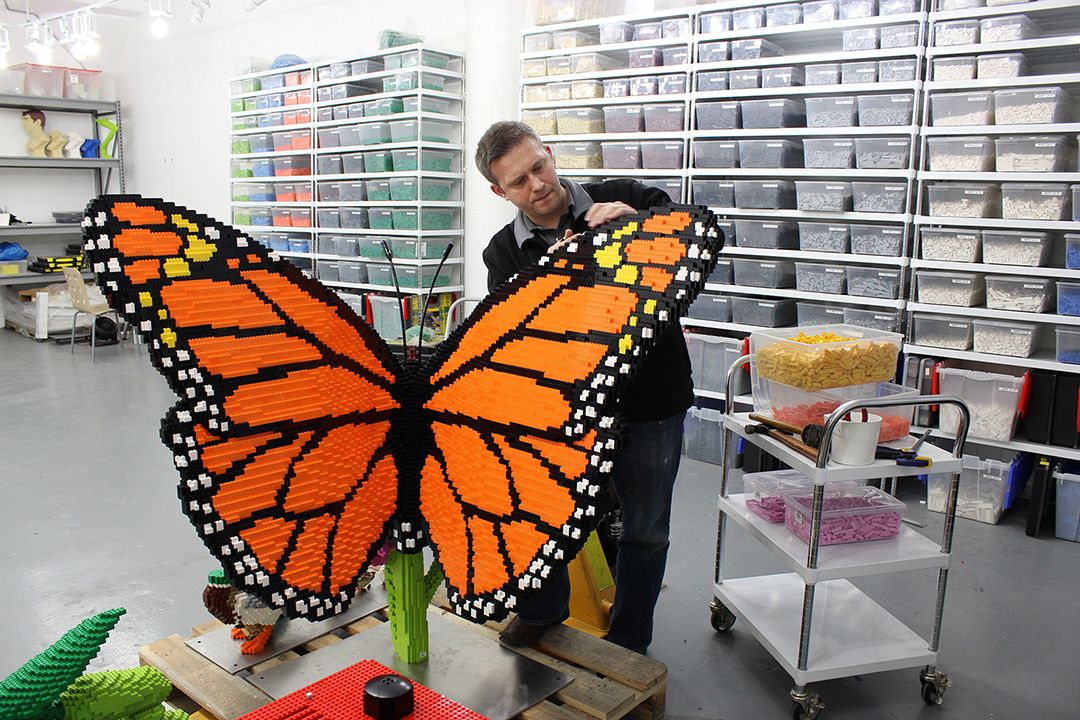 Q: What did you do before you built LEGO models professionally? What inspired you to follow your passion and take the leap to becoming an artist full-time?
Q: What did you do before you built LEGO models professionally? What inspired you to follow your passion and take the leap to becoming an artist full-time?
A: I used to work as a cartoonist, a graphic artist, and a web site designer. I spent 10 years designing web site interfaces and web user experiences, and I wore a suit every day to work. But the whole time, my "inner child" was itching to get out and play! Every night after work I would go home and play with my LEGO toys...sometimes while I was still in my suit! One day I was sitting in my office in a cold-looking, quiet, boring, 40-story glass skyscraper on Park Avenue in New York. I was sitting at my desk but I wasn't working; I was daydreaming about beautiful architecture and bright LEGO colors and thinking about what I would build with LEGO bricks when I got home. It was about then that I realized that was exactly what I needed to do...I should follow my dreams. So I stood up, took off my tie, and walked straight out—just like that, in the middle of the day.
Q: Wow! So, do you still play with LEGO pieces at night when you get home from work?
A: I try to spend a normal 8-hour day at my studio so I can spend time with my wife and children at the end of the day. I have a daughter and a son, who both love to build LEGO kits, so we do that regularly, but for me that's more about watching the amazing creative mind of a child than anything else.
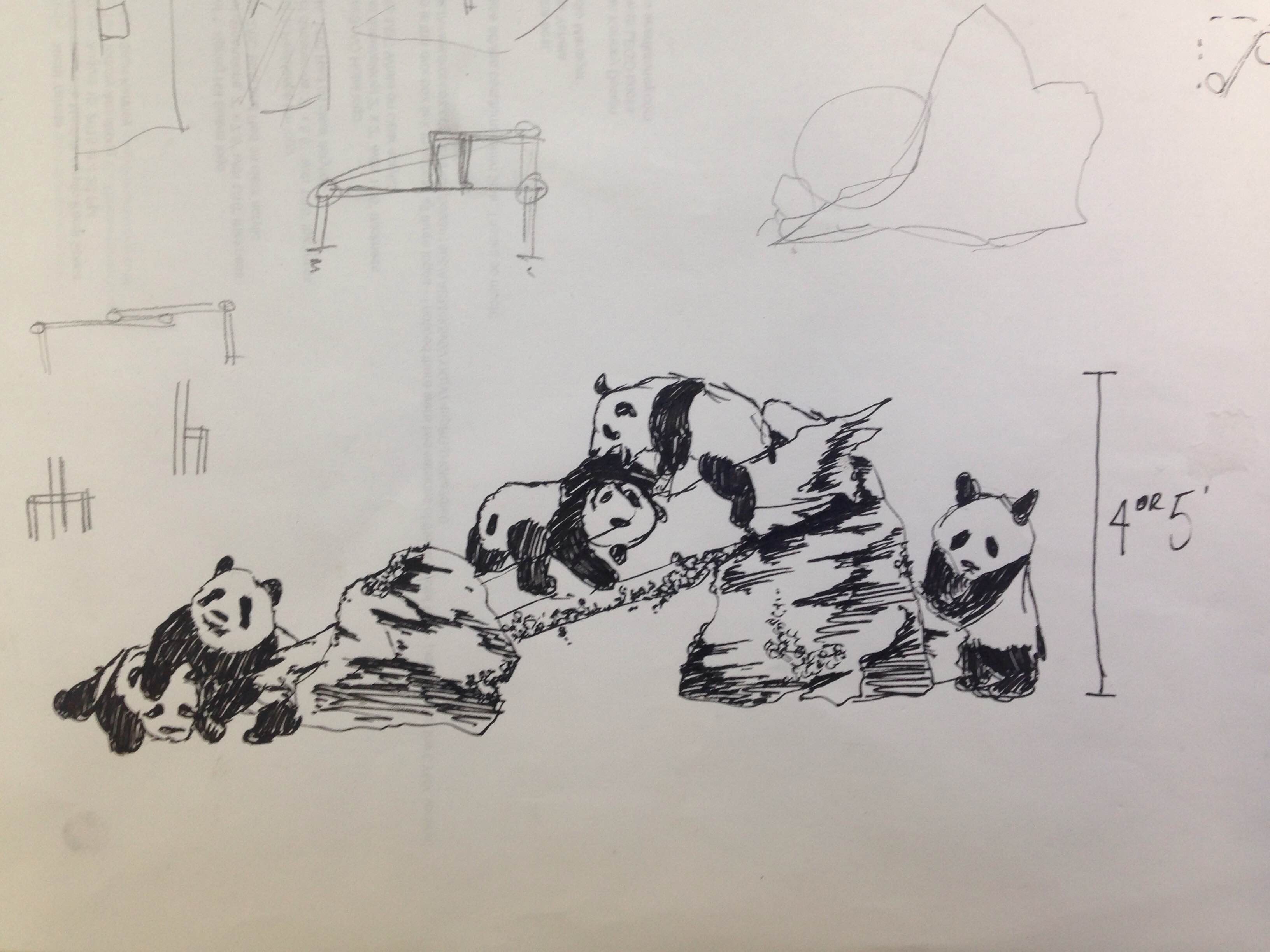
Q: Speaking of creativity, what is your process in going from inspiration to creation?
A: Each sculpture can have a different process. For example, the design of my “Hummingbird and Trumpet Flower” sculpture in Nature Connects show just "popped" in my head the minute someone said "hummingbird." I immediately had this vision of something that you could actually walk under, suspended as if by magic. Creating a spindly little nose and paper-thin wings built out of chunky LEGO pieces seemed like a wonderful challenge and, if done right, something that would look amazing. I spent about 4 weeks designing and planning this specific piece; researching images of hummingbirds in nature, choosing the perfect colors and designing the internal steel reinforcements, then about 5+ weeks building it.
My sculptures are not auto-generated by a computer. Every project always starts out by making lots of drawings and by doing old-fashioned LEGO building at my desk. When I'm designing a sculpture, I gather as many photographs and drawings of the subject as I can, and then use graph paper or a computer model to plan out the basic shape and size. There's a lot of visualization required, and I often have to step back and examine the model from all sides as it's being designed...changing sections over and over, and making multiple physical prototypes. Some of my sculptures are very large and require the help of multiple builders over many months, in which case I use digital design programs to help with the visualization process, and then create schematics for my assistants to follow, sort of like an architect creating blueprints for a construction worker. When I have a design I like, then it's time to start building the final glued copy.
Depending on the size of the sculpture, it can take anywhere from a few weeks to several months! And if the model is something that needs to be uniquely recognized, I spend a lot more time making sure it's perfect.
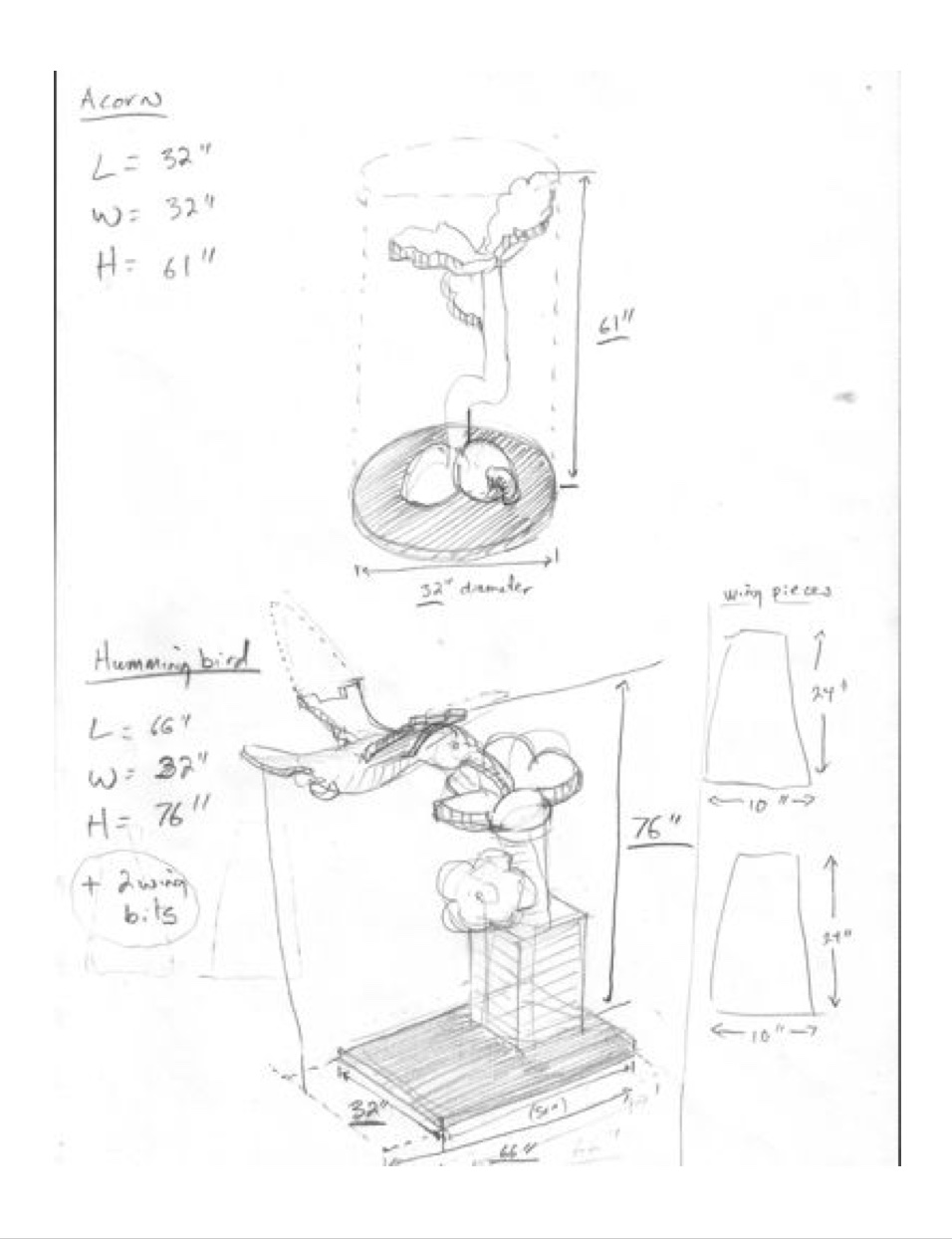 Q: What are the most challenging things for you to create?
Q: What are the most challenging things for you to create?
A: The most challenging thing is to create curved shapes with those hard little plastic rectangles. Making something round and curvy like a shoe or a ball can be tricky, but the most complex thing is to create people's faces. I was commissioned to build sculptural portraits of two brothers and it took an entire summer. We all read so much into facial expressions that you can move one piece and suddenly a face changes from looking depressed to looking bored. I often need to build and re-build a face many times to get the subtlety of the subject's character and their expression just right. Unlike traditional sculpture, you can't just carve out a shape or add to a surface. You have to think ahead as you're building upwards linearly. It's very tricky at first, but once you get the hang of it, it's very rewarding to build something organic.
Q: How are you able to make your sculptures structurally sound enough to withstand shipping, weather, and other unpredictable events involved with traveling exhibitions?
A: I work with a staff of artists in my studio who help me with my creations. Each sculpture is fully glued, steel reinforced, custom-crated, and designed to tour and last for the ages.
Even before a single LEGO brick is placed, my team and I do a lot of design work to figure out what the sculpture is going to look like and how it can physically work. We scrawl drawings on scraps of paper, gesture wildly, wield tape measures, hold metal bars with LEGO pieces glued to them pretending to be gravity, and all kinds of other crazy things that you do when you’re planning such a large endeavor.
It's a lot of hard work for us to build the sculptures as sturdy and efficiently as possible, working around metal that's welded slightly imperfectly, dealing with things getting too heavy or large horizontal things that want to crack in half, interlocking bricks as tightly as possible, building support beams inside, and all kinds of other physical hurdles.
But, working on large projects is my favorite thing to do! They’re the most fun of all, because they require a lot of creative planning, a lot of building, and they always end up creating a big “wow” for both parents and kids.
Q: Tell the truth: do you use any special, non-LEGO brand pieces to help bring your sculptures to life?
A: No! I use only use regular, everyday, off-the-shelf, commercially available LEGO pieces. No special colors, shapes, etc. are used. Every piece is connected to each other the way you’d expect, built within the rules of the LEGO system, without cheating things into place.
Q: Ok, so do you ever think “If only there was a LEGO X, I could do so much more”?
A: I actually never wonder this. I like that I’m limited by the parts that LEGO makes for their children’s toys. Limitations force creativity, so I find I’m always trying to solve a design problem by looking through all the fun bits & pieces that LEGO creates and coming up with new & creative solutions for how to use the pieces.
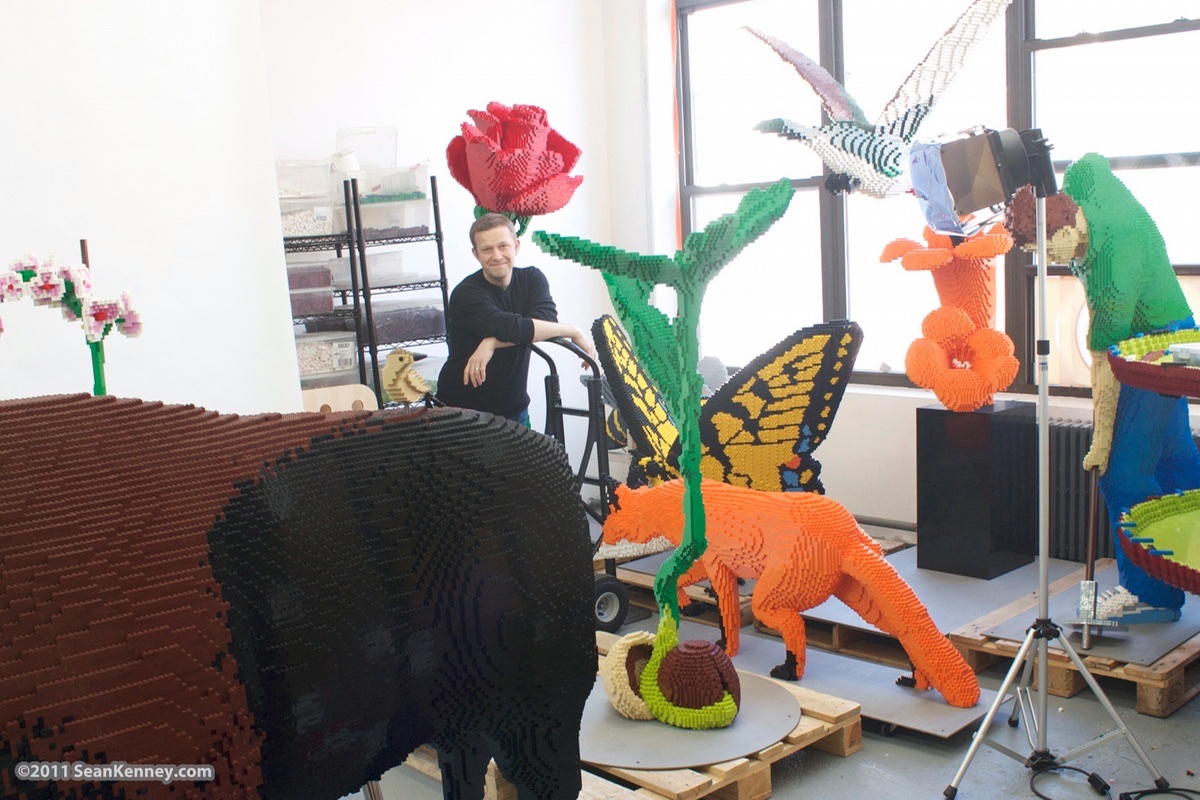
Q: You are a serious, award-winning artist. But you talk a lot about whimsy in your work, and obviously your chosen medium is a toy. What roles do you think that play and playfulness take in the creative and learning processes?
A: It’s funny that we denounce playfulness as being “childish,” and not simply “child-like.” I think the latter is seriously lacking in adulthood. There’s nothing wrong with mulling around on an idea, or sleeping on it, or bouncing something off someone. It’s giving your brain an unstructured way to get your thoughts together on something. It’s messing around with an idea until you get it right. That’s play. Why do we fear making mistakes? Our system of education is to penalize errors, but ironically, we learn a lot more from mistakes than from being right. I encourage risk-taking and mistake-making in my studio so long as we do it in a controlled and recoverable way.
As a parent, when my daughter is coloring and wants to make the sky purple with green splots, I gleefully encourage her to go right ahead. I’ll count for her “uno, two, triangle, four,…” she calls me silly but is probably making much better mental pathways by drawing her own connections. I think “incorrect!” can be a bad thing to say to a kid. I’m honestly more curious why my daughter came to a particular conclusion, rather than that the conclusion was wrong.
Q: Thanks so much for taking the time today, Sean. One last question: what advice do you have for someone who wants to pursue the LEGO arts?
A: Art has to come from within, so do what you are passionate about. Draw, dance, build, whatever. If you love LEGO, fold your passion together with your love of LEGO and explore what that can be to you. And then just keep building! I didn't wake up one morning building 50,000 piece sculptures, I’ve gained all of my technical building knowledge by simply building over and over all my life. Keep building, and don't grow up!
Contact us today to learn more about renting one of our Sean Kenney exhibitions for your venue!
Sean Kenney Exhibitions:
Animal Super Powers
Nature Connects
Nature POP!
World of Bugs